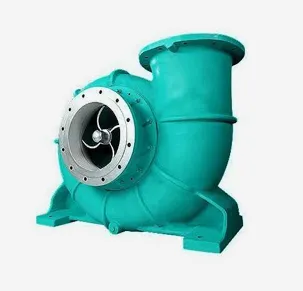English
- Afrikaans
- Albanian
- Amharic
- Arabic
- Armenian
- Azerbaijani
- Basque
- Belarusian
- Bengali
- Bosnian
- Bulgarian
- Catalan
- Cebuano
- Corsican
- Croatian
- Czech
- Danish
- Dutch
- English
- Esperanto
- Estonian
- Finnish
- French
- Frisian
- Galician
- Georgian
- German
- Greek
- Gujarati
- Haitian Creole
- hausa
- hawaiian
- Hebrew
- Hindi
- Miao
- Hungarian
- Icelandic
- igbo
- Indonesian
- irish
- Italian
- Japanese
- Javanese
- Kannada
- kazakh
- Khmer
- Rwandese
- Korean
- Kurdish
- Kyrgyz
- Lao
- Latin
- Latvian
- Lithuanian
- Luxembourgish
- Macedonian
- Malgashi
- Malay
- Malayalam
- Maltese
- Maori
- Marathi
- Mongolian
- Myanmar
- Nepali
- Norwegian
- Norwegian
- Occitan
- Pashto
- Persian
- Polish
- Portuguese
- Punjabi
- Romanian
- Russian
- Samoan
- Scottish Gaelic
- Serbian
- Sesotho
- Shona
- Sindhi
- Sinhala
- Slovak
- Slovenian
- Somali
- Spanish
- Sundanese
- Swahili
- Swedish
- Tagalog
- Tajik
- Tamil
- Tatar
- Telugu
- Thai
- Turkish
- Turkmen
- Ukrainian
- Urdu
- Uighur
- Uzbek
- Vietnamese
- Welsh
- Bantu
- Yiddish
- Yoruba
- Zulu
Telephone: +86 13120555503
Email: frank@cypump.com
Aug . 20, 2024 22:58 Back to list
Precision Peristaltic Pump Design for Efficient Slurry Handling in Various Applications
Efficient Peristaltic Pumps for Handling Slurry with Precision
In various industrial applications, the accurate handling of slurries is critical for operational efficiency and product quality. Slurries, which are mixtures of solids and liquids, present unique challenges, especially when it comes to transportation and processing. This is where efficient peristaltic pumps have emerged as an essential solution. Their ability to handle abrasive, viscous, and shear-sensitive materials with precision makes them invaluable in various sectors, including mining, wastewater treatment, food processing, and pharmaceuticals.
One of the most significant advantages of peristaltic pumps is their design, which utilizes a series of rollers or shoes that compress a flexible tube, creating a flow that pushes the slurry forward. This mechanism ensures that the pumped fluid does not come into contact with the pump's mechanical components, minimizing wear and reducing the risk of contamination. As the rollers move, they create a vacuum that draws the slurry into the pump, allowing for gentle handling of the material without damaging the delicate structure of certain particles.
Moreover, peristaltic pumps are known for their excellent accuracy and control. The ability to regulate the flow rate by adjusting the speed of the motor provides operators with the precision required for sensitive applications. In industries like pharmaceuticals, where the exact dosage is paramount, the precision of these pumps helps in maintaining stringent quality standards. Additionally, it enables a consistent flow of materials, reducing fluctuations that can lead to process inefficiencies.
Another striking feature of peristaltic pumps is their ability to handle a wide variety of slurry compositions. Whether dealing with thick sludges found in wastewater treatment or the abrasive materials typical in mining operations, these pumps can adapt to diverse conditions. This versatility is particularly advantageous in industries where multiple slurry types need to be managed without the need for significant equipment changes.
efficient peristaltic pump for handling slurry with precision ...

Furthermore, the operational efficiency of peristaltic pumps translates into cost savings. Since these pumps are self-priming and can run dry without damage, they reduce the risk of operational failures that can lead to downtime. Their simple design also means that maintenance is often less complex than that required for other pump types, leading to lower maintenance costs and increased uptime.
In terms of energy efficiency, modern peristaltic pumps are designed to minimize power consumption while still delivering high performance. This is essential in an era where businesses are under increasing pressure to reduce operational costs while adhering to environmental sustainability practices. Efficient pumps not only lower energy bills but also reduce the overall carbon footprint of industrial operations.
One of the significant challenges of handling slurries is the potential for clogging and blockages. Peristaltic pumps mitigate this issue effectively due to their unique design, which prevents the solid particles within the slurry from settling out while in transit. This feature significantly reduces the likelihood of pump blockages, allowing for continuous operation and further enhancing efficiency.
In conclusion, efficient peristaltic pumps represent a critical advancement in the handling of slurries across various industries. Their ability to manage diverse slurry compositions with precision, coupled with low maintenance and energy-efficient designs, makes them an ideal choice for operators seeking reliable and cost-effective solutions. As industries continue to evolve and demands for efficiency and quality standards rise, the role of peristaltic pumps will undoubtedly expand, solidifying their place as indispensable tools in modern industrial applications.
-
Heavy-Duty Mining Sludge Pumps - Wear-Resistant Slurry Handling
NewsAug.02,2025
-
Horizontal Split Case Pump with GPT-4 Turbo | High Efficiency
NewsAug.01,2025
-
ISG Series Pipeline Pump - Chi Yuan Pumps | High Efficiency, Durable Design
NewsAug.01,2025
-
Advanced Flue Gas Desulfurization Pump with GPT-4 Turbo | Durable & Efficient
NewsJul.31,2025
-
ISG Series Vertical Pipeline Pump - Chi Yuan Pumps | Advanced Hydraulic Design&Durable Construction
NewsJul.31,2025
-
ISG Series Vertical Pipeline Pump - Chi Yuan Pumps | Energy Efficient & Low Noise
NewsJul.31,2025










